DAIKIN REYQ72PAYD, REYQ96PAYD, REYQ120PAYD, REYQ72PATJ, REYQ96PATJ INSTALLATION MANUAL
...
INSTALLATION MANUAL




 System air conditioner
System air conditioner
English
Français
Español
REYQ72PAYD REYQ72PATJ
REYQ96PAYD REYQ96PATJ
REYQ120PAYD REYQ120PATJ
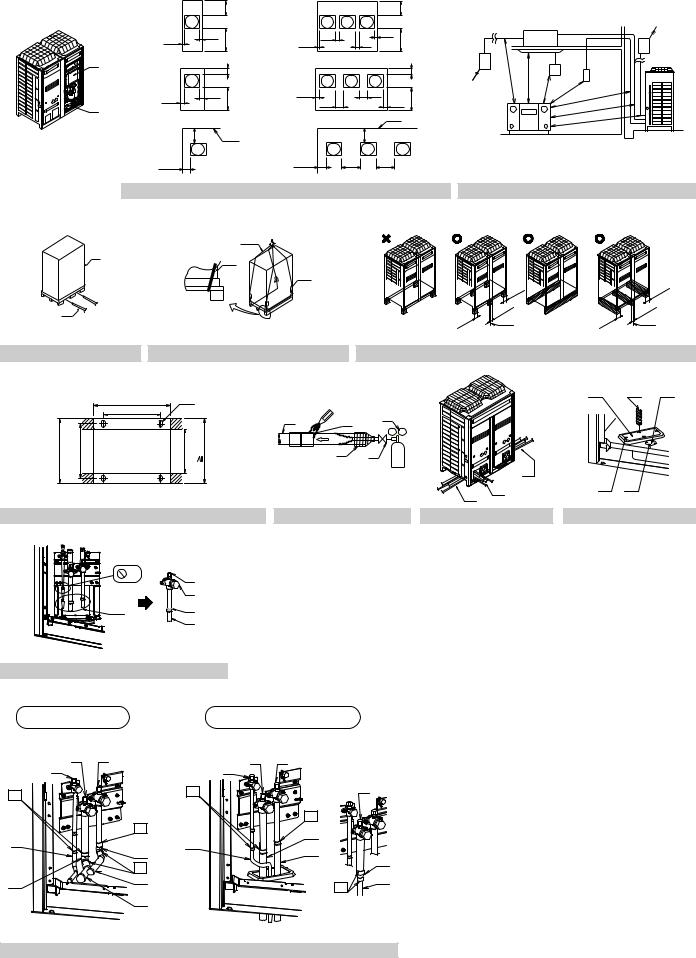
≥3/8 1 ≥3/8
1
(Pattern 2)
≥2 1 ≥2
2
(Pattern 3) |
≥11-3/4 |
2 |
|
≥7-7/8 1
figure 1 |
|
figure 2 |
1
|
1 |
2 |
|
figure 4 |
figure 5 |
51-1/4 |
1 |
45-3/4 |
|
30-1/8 2 29 |
24-7/8 3 30-1/8 4 |
figure 7
2 |
5 |
|
4 |
16
3
figure 11
< When installed in serial > |
|
|
|
|
|
|
|
|
|
|||||
(Pattern 1) |
|
|
|
≥11-3/4 |
|
|
|
|
|
|
|
|
|
|
|
|
|
|
|
4 |
|
|
1 |
|
|
|
|
|
|
|
1 |
|
≥3/8 |
|
|
|
|
|
|
|
|
|
|
|
≥3/4 |
|
≥19-5/8 |
|
|
|
|
|
|
|
|
|
|||
≥3/8 |
|
≥3/4 |
|
|
|
|
|
|
|
|
2 |
|||
|
|
|
|
|
3 |
|
|
|
|
|
|
|
||
|
|
|
|
|
2 |
60 |
40 |
3 |
|
|
|
|
|
|
(Pattern 2) |
|
|
|
|
≥3-7/8 |
4 |
|
|
|
|
||||
|
|
|
|
|
4 |
≥ |
≥ |
|
|
|
|
|
||
|
|
|
|
|
|
|
40 |
≥40 |
|
|
|
|
|
|
≥2 |
1 |
≥3-7/8 |
|
|
|
|
≥60 |
|
|
|
|
|||
≥2 |
≥19-5/8 |
|
|
≥ |
|
|
|
|
|
|||||
≥3-7/8 |
|
|
|
|
|
|
|
≥60 |
|
|
|
|
||
|
|
|
|
|
3 |
|
|
|
|
|
|
|
|
|
|
|
|
2 |
5 |
|
|
≥60 |
|
|
|
|
|||
|
|
|
|
|
|
|
|
|
|
|||||
|
|
|
|
|
|
|
|
|
|
|
||||
(Pattern 3) |
|
≥11-3/4 |
|
|
|
|
|
|
|
|
|
|
(in.) |
|
|
|
|
|
|
|
|
|
|
|
|
|
|||
≥7-7/8 |
≥15-3/4 1 |
≥15-3/4 |
|
|
|
|
|
|
|
|
|
|
|
|
|
|
|
|
|
figure 3 |
|
|
|
|
|
|
|
|
|
|
|
|
|
1 |
2 |
|
|
3 |
|
|
4 |
|
|
|
2 |
|
|
|
|
|
|
|
|
|
|
|
|
|
|
|
|
|
|
|
|
|
≥ |
-7/8 |
|
|
|
|
≥ |
-7/8 |
|
|
|
|
|
|
|
3 |
|
|
|
|
3 |
||
|
|
|
|
|
|
≥ |
-7/8 |
|
|
|
≥ |
-7/8 |
|
|
|
|
|
|
|
|
3 |
|
|
|
|
3 |
|
||
|
|
|
|
|
-7/8 |
|
5 |
|
|
-7/8 |
|
|
5 |
|
|
|
|
|
|
≥3 |
|
|
|
≥3 |
|
|
|
||
|
|
figure 6 |
|
|
|
|
|
|
|
|
|
|
||
|
|
|
|
|
|
|
|
|
|
1 |
3 |
|
|
2 |
1 |
2 |
|
6 |
|
|
|
|
|
|
|
|
|
|
|
|
|
|
|
|
|
|
|
|
|
|
|
|
||
3 |
|
|
|
|
|
|
|
|
|
|
|
|
|
|
|
4 |
5 |
|
3 |
|
|
|
|
|
|
|
|
|
|
|
|
|
|
|
|
|
|
3 |
|
|
|
|
|
|
|
|
|
|
|
1 |
2 |
|
|
4 |
4 |
|
|
|
|
|
|
|
|
|
|
|
|
|
|
|
|
|||
|
|
|
|
|
|
|
|
|
|
|
|
|
|
|
figure 8 |
|
|
|
|
figure 9 |
|
|
|
figure 10 |
|
|
|
|
|
1 |
|
|
2 |
|
3 |
|
|
4 |
|
6 |
7 |
6 |
7 |
|
5 |
|
|||
|
5 |
17 |
||
8 |
|
8 |
6 |
|
|
|
|||
|
|
|
||
|
8 |
|
8 |
|
|
|
15 |
||
9 |
|
14 |
||
13 |
16 |
|||
|
|
|||
|
8 |
|
18 |
|
|
|
|
||
12 |
11 |
|
15 |
|
|
|
|
8 |
|
|
10 |
|
|
figure 12
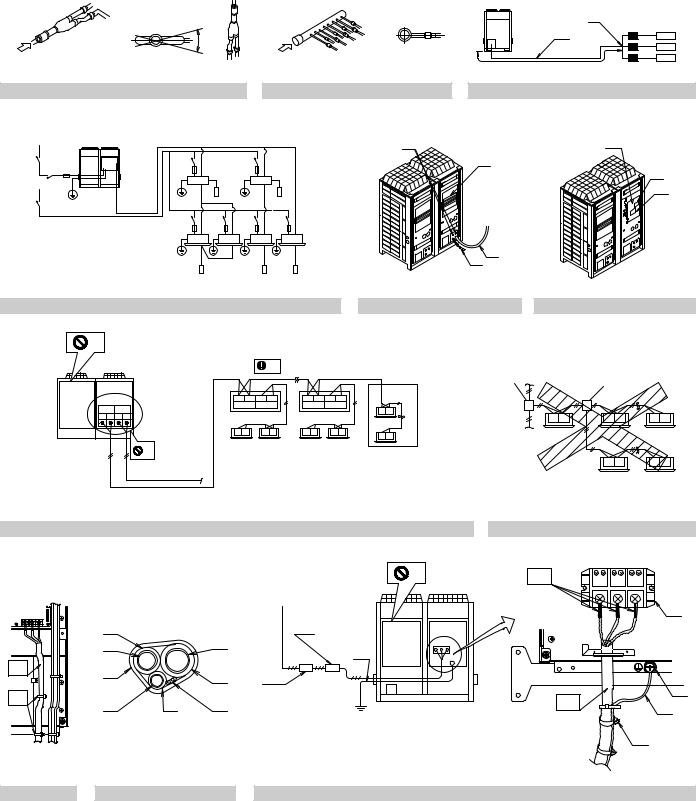
|
|
|
|
|
|
|
|
|
|
1 |
|
|
|
|
|
|
|
|
|
|
|
|
|
|
4 |
|
|
5 |
6 |
|
|
|
|
|
|
|
|
|
|
2 |
|
|
||
|
|
3 |
|
4 |
|
|
|
|
1 |
|
|
|
|
|
|
|
|
|
|
|
|
|
|
|
|
|
|||
|
|
|
|
|
|
|
2 |
|
|
|
|
|
||
A |
1 |
|
2 |
|
B |
|
|
|
|
|
|
|
|
|
|
5 |
|
|
|
|
|
|
|
|
|
||||
|
|
|
|
|
|
|
|
3 |
|
|
|
|
||
|
|
|
|
|
|
|
|
|
|
|
|
|
||
figure 13 |
|
|
|
figure 14 |
|
|
|
figure 15 |
|
|
|
|
||
1 |
|
5 |
|
|
|
|
|
|
2 |
|
|
1 |
|
|
|
|
|
|
|
|
|
|
|
|
|
|
|
||
2 |
4 |
|
|
|
|
|
|
|
|
1 |
|
|
|
|
|
|
|
|
|
|
|
|
|
|
|
|
|
2 |
|
1 |
3 |
|
|
9 |
|
|
|
|
|
|
|
|
|
|
|
|
|
|
|
|
|
|
|
|
|
3 |
|||
|
|
|
|
6 |
|
|
|
|
|
|
|
|
|
|
2 |
|
|
|
|
|
|
|
|
|
|
|
|
|
|
|
|
|
|
3 |
|
|
|
|
|
|
|
|
|
|
|
|
|
|
4 |
|
|
|
|
|
|
|
|
|
|
|
|
|
|
8 |
|
|
|
|
|
|
|
|
|
|
|
|
|
|
|
|
|
|
|
|
4 |
|
|
|
|
|
|
|
|
7 |
|
|
|
|
|
3 |
|
|
|
|
|
|
|
|
|
|
|
|
|
|
|
|
|
|
|
figure 16 |
|
|
|
|
|
|
figure 17-1 |
figure 17-2 |
|
|
|
|
||
|
|
3 |
|
|
|
|
|
|
|
|
|
|
|
|
|
|
|
|
|
6 |
|
|
|
|
|
|
|
|
|
|
2 |
1 |
|
|
|
|
|
|
9 |
1 |
|
2 |
|
|
|
|
|
|
|
|
|
|
|
|
|
|
|||
|
|
A1P |
|
F1 F2 F1 F2 |
F1 F2 F1 F2 |
|
|
|
|
|
|
|||
|
|
|
|
|
|
|
|
|
|
|||||
|
|
TOIN/DUNIT TOOUT/DUNIT |
|
TO OUT/D UNIT TO IN/D UNIT |
TO OUT/D UNIT TO IN/D UNIT |
F1 |
F2 |
|
|
|
|
|
||
|
|
|
|
7 |
|
7 |
|
|
|
|
|
|||
|
|
F1 F2 F1 F2 |
|
|
|
|
|
F1 F2 |
|
F1 F2 |
|
F1 F2 |
||
|
|
|
|
F1 F2 |
F1 F2 |
F1 F2 |
F1 F2 |
F1 F2 |
|
|
|
|
|
|
|
|
|
|
|
8 |
|
8 |
|
|
|
|
|
||
|
|
|
4 |
|
|
|
|
|
|
|
|
|
||
|
|
|
|
|
|
|
|
|
|
|
|
|
|
|
|
|
|
|
|
|
|
|
|
|
|
|
F1 F2 |
|
F1 F2 |
|
|
|
|
5 |
|
|
|
|
|
|
|
|
|
|
figure 18 |
|
|
|
|
|
|
|
|
figure 19 |
|
|
|
|
|
|
|
|
|
|
|
|
|
|
7 |
8 |
L1 |
L2 |
L3 |
|
|
|
|
|
|
|
|
|
|
|
|
||||
|
|
|
|
|
|
|
|
|
|
|
|
|||
1 |
|
|
|
|
|
1 |
|
|
|
|
|
|
|
|
(A1P) |
|
|
|
|
|
|
|
|
|
|
|
|
|
9 |
|
|
4 |
|
|
|
3 |
|
|
6 |
5 |
|
|
|
|
|
|
1 |
|
2 |
|
|
|
4 |
|
|
|
|
|
|
3 |
|
|
|
|
|
|
|
|
|
|
|
|
|
|
|
5 |
|
4 |
2 |
|
|
|
|
|
|
|
|
|
|
|
|
|
|
|
|
|
|
|
|
|
|
|
||
2 |
|
|
|
|
|
|
|
|
|
|
|
|
|
10 |
|
3 |
4 |
6 |
|
|
|
|
|
12 |
|
|
|
4 |
|
|
|
|
|
|
|
|
|
|
|
|||||
|
|
|
|
|
|
|
|
|
|
|
|
|
|
|
|
|
|
|
|
|
|
|
|
|
|
|
|
11 |
|
figure 20 |
figure 21 |
|
|
figure 22 |
|
|
|
|
|
|
|
|
||
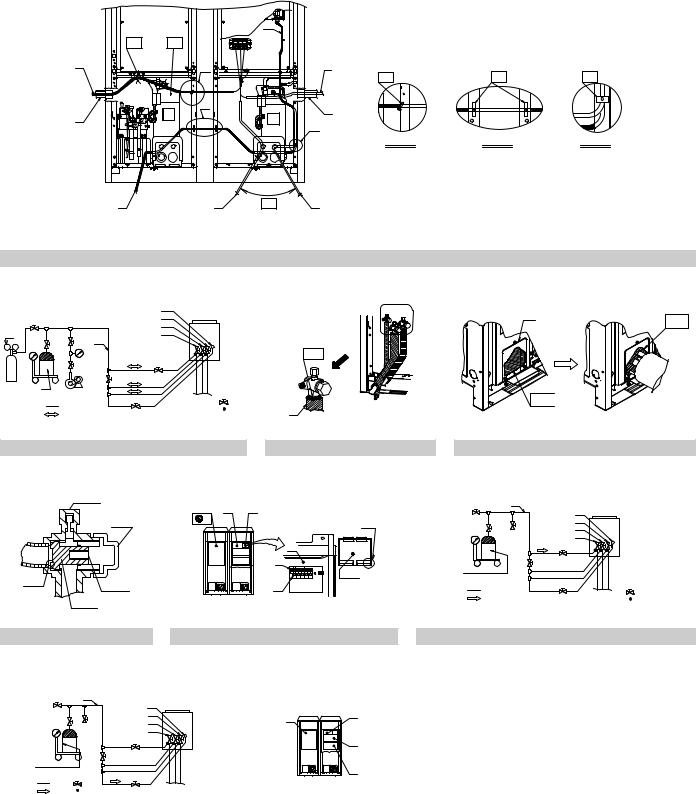
|
|
|
11 |
|
|
1 |
12 |
|
|
|
|
3 |
|
9 |
|
|
|
A |
10 |
8 |
14 |
14 |
|
|
|
|
13 |
||
|
B |
|
2 |
|
|
2 |
|
|
|
|
|
|
|
C |
|
|
|
|
|
|
|
|
|
|
|
|
Part A |
Part B |
Part C |
4 |
5 |
6 |
7 |
figure 23
|
7 |
|
1 |
|
8 |
14 |
|
|
9 |
|
3 |
1 |
10 |
|
|
6 |
|
|
|
|
|
|
2
12
2 3
4 |
13 |
|
|
|
|
|
|
|
|
||
5 |
11 |
15 |
: 16 |
2 |
|
: 18 |
|||||
|
( |
: 17 ) |
1 |
||
: 19 |
|
||||
|
|
|
|
figure 24 |
|
|
figure 25 |
figure 26 |
|
|
1 |
|
|
|
|
3 |
|
|
3 |
1 |
2 |
|
11 |
|
|
|
4 |
||||
2 |
4 |
|
8 |
|
5 |
|
|
|
|
|
|
6 |
|
|
|
|
|
|
7 |
|
|
|
|
5 |
1 |
9 |
|
|
|
|
|
|
|
|
|
6 |
2 |
10 |
|
|
5 |
|
2 |
|
|
|
|
3 |
7 |
: 13 |
8 |
|
|
|
|
|
: 15 |
||||
|
|
|
12 |
|
||
|
4 |
|
: 14 |
( |
: 16 ) |
|
|
|
|
||||
|
|
|
|
|
|
figure 27 |
|
figure 28 |
|
figure 29 |
|
3 |
|
|
|
|
4 |
11 |
|
1 |
|
5 |
|
2 |
|
|
6 |
|
|
|
|
7 |
|
|
|
1 |
9 |
|
|
3 |
10
2
4
: 13 |
|
: 15 |
8 |
|
12 |
||
: 14 |
( |
: 16 ) |
figure 30 |
|
figure 31 |
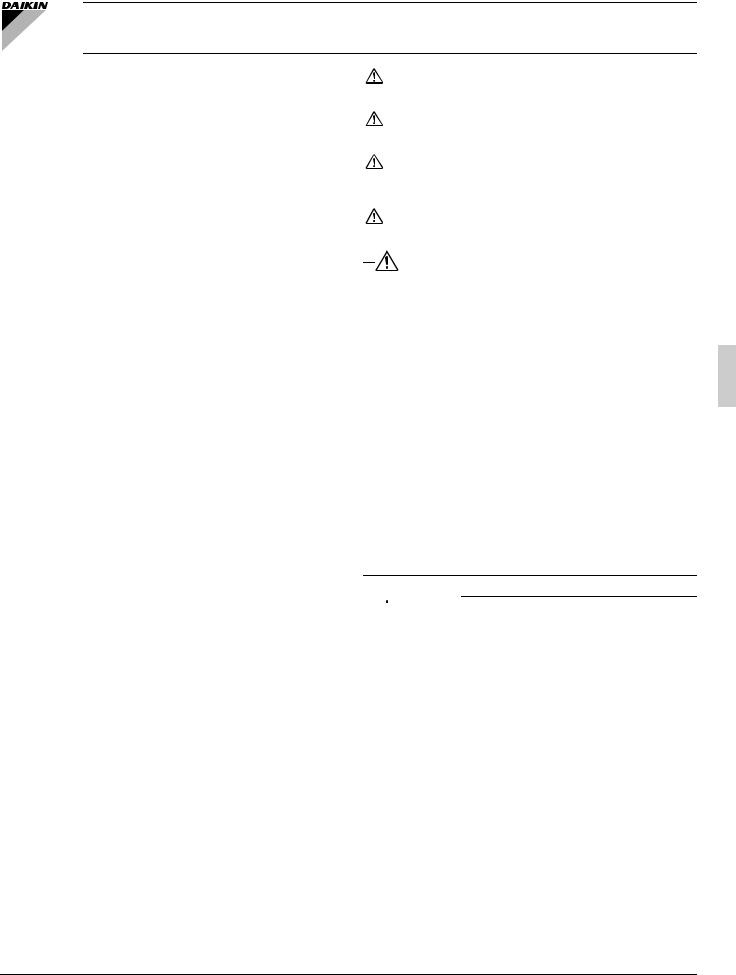
REYQ72PAYD |
REYQ72PATJ |
VRVIII System air conditioner |
Installation manual |
REYQ96PAYD |
REYQ96PATJ |
||
REYQ120PAYD |
REYQ120PATJ |
|
|
CONTENTS |
|
|
1. |
FIRST OF ALL.......................................................................... |
1 |
|
1-1. Safety considerations ........................................................ |
1 |
|
1-2. Special notice of product ................................................... |
2 |
|
1-3. Disposal requirements....................................................... |
3 |
2. |
INTRODUCTION...................................................................... |
3 |
|
2-1. Combination ...................................................................... |
3 |
|
2-2. Standard supplied accessories ......................................... |
3 |
|
2-3. Option accessory............................................................... |
3 |
|
2-4. Technical and Electrical specifications.............................. |
3 |
|
2-5. Main components .............................................................. |
3 |
3. |
SELECTION OF LOCATION.................................................... |
3 |
4. |
INSPECTING AND HANDLING THE UNIT.............................. |
4 |
5. |
PLACING THE UNIT ................................................................ |
4 |
6. |
REFRIGERANT PIPING .......................................................... |
4 |
|
6-1. Selection of piping material and |
|
|
Refrigerant branching kit ................................................... |
4 |
|
6-2. Protection against contamination when installing pipes .... |
5 |
|
6-3. Pipe connection................................................................. |
5 |
|
6-4. Connecting the refrigerant piping ...................................... |
5 |
|
6-5. Example of connection ...................................................... |
6 |
7. |
FIELD WIRING......................................................................... |
9 |
|
7-1. Power circuit, safety device and cable requirements ........ |
9 |
|
7-2. Wiring Connection Example for Whole System................. |
9 |
|
7-3. Leading wire Procedure .................................................... |
9 |
|
7-4. Transmission Wiring Connection Procedure ................... |
10 |
|
7-5. Power Wiring Connection Procedure .............................. |
10 |
|
7-6. Procedure for Wiring Inside Units.................................... |
11 |
8. |
AIR TIGHT TEST AND VACUUM DRYING ........................... |
11 |
9. |
PIPE INSULATION................................................................. |
12 |
10. |
CHECKING OF DEVICE AND |
|
|
INSTALLATION CONDITIONS .............................................. |
12 |
11. |
ADDITIONAL REFRIGERANT CHARGE AND |
|
|
CHECK OPERATION............................................................. |
12 |
|
11-1.Before working ............................................................... |
12 |
|
11-2.Procedure of Adding Refrigerant charging and |
|
|
check operation ............................................................... |
13 |
12. |
ONSITE SETTINGS ............................................................... |
16 |
|
DANGER .................... |
Indicates an imminently hazardous situa- |
||
|
|
|
|
tion which, if not avoided, will result in |
|
|
|
|
death or serious injury. |
|
WARNING .................. |
Indicates a potentially hazardous situation |
||
|
|
|
|
which, if not avoided, could result in death |
|
|
|
|
or serious injury. |
|
CAUTION.................... |
Indicates a potentially hazardous situation |
||
|
|
|
|
which, if not avoided, may result in minor or |
|
|
|
|
moderate injury. It may also be used to |
|
|
|
|
alert against unsafe practices. |
|
NOTE.......................... |
Indicates situations that may result in |
||
|
|
|
|
equipment or property-damage accidents |
|
|
|
|
only. |
|
|
|
DANGER |
|
|
|
|
|
|
|
|
|
|
|
|
|
|||
|
|
|
|
|
|
|
|
|
|
•Refrigerant gas is heavier than air and replaces oxygen. A massive leak can lead to oxygen depletion, especially in basements, and an asphyxiation hazard could occur leading to serious injury or death.
•Do not ground units to water pipes, gas pipes, telephone wires, or lightning rods as incomplete grounding can cause a severe shock hazard resulting in severe injury or death. Additionally, grounding to gas pipes could cause a gas leak and potential explosion causing severe injury or death.
•If refrigerant gas leaks during installation, ventilate the area immediately. Refrigerant gas may produce toxic gas if it comes in contact with fire. Exposure to this gas could cause severe injury or death.
•After completing the installation work, check that the refrigerant gas does not leak throughout the system.
•Do not install unit in an area where flammable materials are present due to risk of explosions that can cause serious injury or death.
•Safely dispose all packing and transportation materials in accordance with federal/state/local laws or ordinances. Packing materials such as nails and other metal or wood parts, including plastic packing materials used for transportation may cause injuries or death by suffocation.
13. |
TEST RUN ............................................................................. |
16 |
|
13-1.Before test run................................................................ |
16 |
|
13-2.Test Run......................................................................... |
16 |
|
13-3.Checks After Test Run ................................................... |
17 |
14. |
CAUTION FOR REFRIGERANT LEAKS ............................... |
17 |
1.FIRST OF ALL
•This document is an installation manual for the Daikin REYQ-PA Series VRV Inverter. Before installing the unit, read this manual thoroughly, and following the instructions contained in it.
After installation, do a test run to make sure the unit runs properly, and then explain how to operate and take care of the unit to the customer, using the operation manual.
Lastly, make sure the customer keeps this manual, along with the operation manual, in a safe place.
1-1 Safety considerations
Read these “SAFETY CONSIDERATIONS for Installation” carefully before installing air conditioning equipment. After completing the installation, make sure that the unit operates properly during the startup operation. Instruct the customer on how to operate and maintain the unit. Inform customers that they should store this Installation Manual with the Operation Manual for future reference.
Always use a licensed installer or contractor to install this product. Improper installation can result in water or refrigerant leakage, electrical shock, fire, or explosion.
Meanings of DANGER, WARNING, CAUTION, and NOTE Symbols:

 WARNING
WARNING
•Only qualified personnel must carry out the installation work. Installation must be done in accordance with this installation manual. Improper installation may result in water leakage, electric shock, or fire.
•When installing the unit in a small room, take measures to keep the refrigerant concentration from exceeding allowable safety limits. Excessive refrigerant leaks, in the event of an accident in a closed ambient space, can lead to oxygen deficiency.
•Use only specified accessories and parts for installation work. Failure to use specified parts may result in water leakage, electric shocks, fire, or the unit falling.
•Install the air conditioner on a foundation strong enough that it can withstand the weight of the unit. A foundation of insufficient strength may result in the unit falling and causing injuries.
•Take into account strong winds, typhoons, or earthquakes when installing. Improper installation may result in the unit falling and causing accidents.
•Make sure that a separate power supply circuit is provided for this unit and that all electrical work is carried out by qualified personnel according to local state, and national regulations. An insufficient power supply capacity or improper electrical construction may lead to electric shocks or fire.
English |
1 |
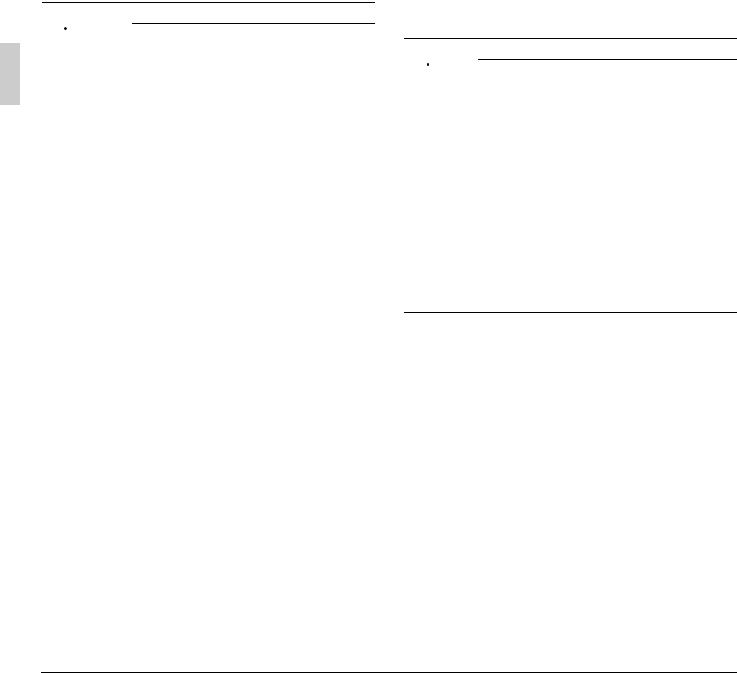
•Make sure that all wiring is secured, that specified wires are used, and that no external forces act on the terminal connections or wires. Improper connections or installation may result in fire.
•When wiring, position the wires so that the electric parts box lid can be securely fastened. Improper positioning of the electric parts box lid may result in electric shocks, fire, or the terminals overheating.
•Before touching electrical parts, turn off the unit.
•Be sure to install a ground fault circuit interrupter if one is not already available. This helps prevent electrical shocks or fire.
•Securely fasten the outside unit terminal cover (panel). If the terminal cover/panel is not installed properly, dust or water may enter the outside unit causing fire or electric shock.
•When installing or relocating the system, keep the refrigerant circuit free from substances other than the specified refrigerant (R-410A) such as air. Any presence of air or other foreign substance in the refrigerant circuit can cause an abnormal pressure rise or rupture, resulting in injury.
•Do not change the setting of the protection devices. If the pressure switch, thermal switch, or other protection device is shorted and operated forcibly, or parts other than those specified by Daikin are used, fire or explosion may occur.


 CAUTION
CAUTION
•Do not touch the switch with wet fingers. Touching a switch with wet fingers can cause electric shock.
•Do not allow children to play on or around the unit to prevent injury.
•Do not touch the refrigerant pipes during and immediately after operation as the refrigerant pipes may be hot or cold, depending on the condition of the refrigerant flowing through the refrigerant piping, compressor, and other refrigerant cycle parts. Your hands may suffer burns or frostbite if you touch the refrigerant pipes. To avoid injury, give the pipes time to return to normal temperature or, if you must touch them, be sure to wear proper gloves.
•Heat exchanger fins are sharp enough to cut.
To avoid injury wear glove or cover the fins when working around them.
•Install drain piping to proper drainage. Improper drain piping may result in water leakage and property damage.
•Insulate piping to prevent condensation.
•Be careful when transporting the product.
•Do not turn off the power immediately after stopping operation. Always wait for at least 5 minutes before turning off the power. Otherwise, water leakage may occur.
•Do not use a charging cylinder. Using a charging cylinder may cause the refrigerant to deteriorate.
•Refrigerant R-410A in the system must be kept clean, dry, and tight.
(a)Clean and Dry -- Foreign materials (including mineral oils such as SUNISO oil or moisture) should be prevented from getting into the system.
(b)Tight -- R-410A does not contain any chlorine, does not destroy the ozone layer, and does not reduce the earth’s protection again harmful ultraviolet radiation. R-410A can contribute to the greenhouse effect if it is released. Therefore take proper measures to check for the tightness of the refrigerant piping installation. Read the chapter Refrigerant Piping and follow the procedures.
•Since R-410A is a blend, the required additional refrigerant must be charged in its liquid state. If the refrigerant is charged in a state of gas, its composition can change and the system will not work properly.
•The indoor unit is for R-410A. See the catalog for indoor models that can be connected. Normal operation is not possible when connected to other units.
•Remote controller (wireless kit) transmitting distance can be shorter than expected in rooms with electronic fluorescent lamps (inverter or rapid start types). Install the indoor unit far away from fluorescent lamps as much as possible.
•Indoor units are for indoor installation only. Outdoor units can be installed either outdoors or indoors.
•Do not install the air conditioner in the following locations:
(a)Where a mineral oil mist or oil spray or vapor is produced, for example, in a kitchen.
Plastic parts may deteriorate and fall off or result in water leakage.
(b)Where corrosive gas, such as sulfurous acid gas, is produced.
Corroding copper pipes or soldered parts may result in refrigerant leakage.
(c)Near machinery emitting electromagnetic waves. Electromagnetic waves may disturb the operation of the control system and cause the unit to malfunction.
(d)Where flammable gas may leak, where there is carbon fiber, or ignitable dust suspension in the air, or where volatile flammables such as thinner or gasoline are handled. Operating the unit in such conditions can cause a fire.
•Take adequate measures to prevent the outside unit from being used as a shelter by small animals. Small animals making contact with electrical parts can cause malfunctions, smoke, or fire. Instruct the customer to keep the area around the unit clean.

 NOTE
NOTE
•Install the power supply and control wires for the indoor and outdoor units at least 3.5 feet away from televisions or radios to prevent image interference or noise. Depending on the radio waves, a distance of 3.5 feet may not be sufficient to eliminate the noise.
•Dismantling the unit, treatment of the refrigerant, oil and additional parts must be done in accordance with the relevant local, state, and national regulations.
•Do not use the following tools that are used with conventional refrigerants: gauge manifold, charge hose, gas leak detector, reverse flow check valve, refrigerant charge base, vacuum gauge, or refrigerant recovery equipment.
•If the conventional refrigerant and refrigerator oil are mixed in R-410A, the refrigerant may deteriorate.
•This air conditioner is an appliance that should not be accessible to the general public.
•The wall thickness of field-installed pipes should be selected in accordance with the relevant local, state, and national regulations.
1-2 Special notice of product
[CLASSIFICATION]
This air conditioner comes under the term “appliances not accessible to the general public”.
[REFRIGERANT]
VRVIII System use R410A refrigerant.
•The refrigerant R410A requires strict cautions for keeping the system clean, dry and tight.
Read the chapter “REFRIGERANT PIPING” carefully and follow these procedures correctly.
A.Clean and dry
Foreign materials (including mineral oils such as SUNISO oil or moisture) should be prevented from getting mixed into the system.
B.Tight
Take care to keep the system tight when installing.
R410A does not contain any chlorine, does not destroy the ozone layer, and does not reduce the earth’s protection against harmful ultraviolet radiation.
R410A can contribute slightly to the greenhouse effect if it is released.
•Since R410A is a mixed refrigerant, the required additional refrigerant must be charged in its liquid state. If the refrigerant is charged in a state of gas, its composition changes and the system will not work properly.
2 |
English |
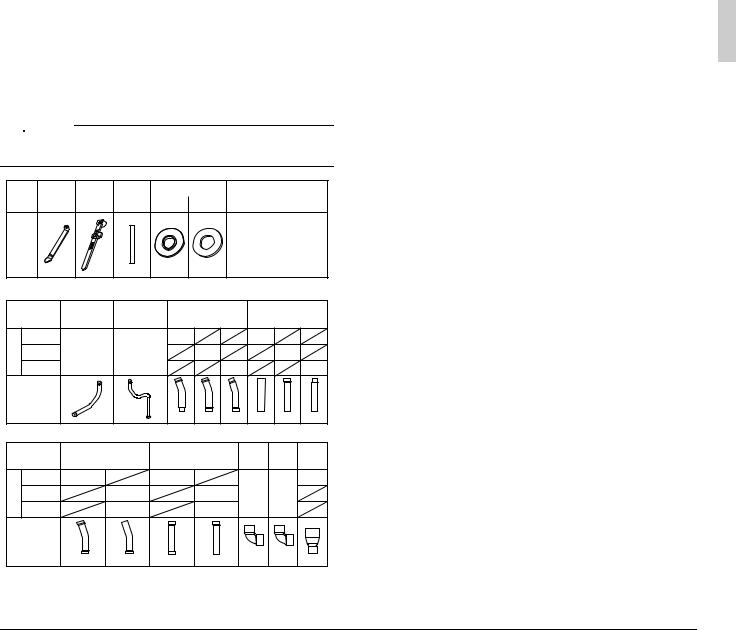
[DESIGN PRESSURE]
Since design pressure is 478 psi, the wall thickness of pipes should be more carefully selected in accordance with the relevant local and national regulations.
1-3 Disposal requirements
Dismantling of the unit, treatment of the refrigerant, oil and eventual other parts, should be done in accordance with the relevant local and national regulations.
2.INTRODUCTION
•REYQ-PA series are designed for outdoor installation and used for cooling and heating applications.
•The BS units that combined with REYQ-PA system for changing the refrigerant flow to indoor units are BSVQ36 · 60 · 96P type only. To combine with other type BS unit will cause malfunction.
•The indoor units that combined with REYQ-PA system for air conditioning are Daikin VRV series indoor units that compatible with R410A. To learn which indoor units are compatible with R410A, refer to the product catalogs. To combine with other refrigerant indoor unit will cause malfunction.
2-1 Combination
• The indoor units can be installed in the following range.
Outside unit |
Total capacity index of indoor units |
||
REYQ72PAYD/PATJ ............................ |
43 |
~ 93.5 |
|
REYQ96PAYD/PATJ ............................ |
57.5 |
~ |
124.5 |
REYQ120PAYD/PATJ .......................... |
72 |
~ |
156 |
•If the total capacity of the connected indoor units exceeds the capacity of the outside unit, cooling and heating performance may drop when running the indoor units. See the capacity table in the Engineering Data Book for details.
2-2 Standard supplied accessories
Confirm the following accessories are included. The storage location of the accessories is shown in figure 1.

 NOTE
NOTE
Do not throw away any of the accessories until installation is complete. They are needed for installation work.
Name |
Clamp(1) |
Clamp(2) Vinyl tube |
Conduit mounting plate |
Manuals, etc. |
||
|
|
|
|
|
|
|
Quantity |
9 pcs. |
3 pcs. |
4 pcs. |
2 pcs. |
2 pcs. |
1 pc. about each item |
• Operation manual
• Installation manual
• “REQUEST FOR THE Shape INDICATON” label
(Installation records)
|
|
Liquid side |
Liquid side |
Suction gas |
Suction gas |
||||
|
Name |
accessory |
accessory |
side accessory |
side accessory |
||||
|
|
pipe (1) |
pipe (2) |
|
pipe (1) |
|
|
pipe (2) |
|
Quantity |
72PA type |
|
|
1 pc. |
|
|
1 pc. |
|
|
96PA type |
1 pc. |
1 pc. |
|
1 pc. |
|
|
1 pc. |
|
|
120PA type |
|
|
|
|
1 pc. |
|
|
1 pc. |
|
|
|
|
|
|
|
|
|||
|
Shape |
|
|
|
|
|
|
|
|
|
|
|
|
φ7/8 |
φ7/8 |
φ1-1/8 |
φ3/4 |
φ7/8 |
φ1-1/8 |
|
HP / LP gas |
HP / LP gas |
L type |
L type |
accessory |
|
Name |
side accessory |
side accessory |
accessory accessory |
|||
joint (2) |
||||||
|
pipe (1) |
pipe (2) |
joint (1) |
joint (2) |
|
|
Quantity |
72PA type |
1 pc. |
|
1 pc. |
|
|
1 pc. |
96PA type |
|
1 pc. |
|
1 pc. |
1 pc. |
1 pc. |
|
|
|
1 pc. |
|
1 pc. |
|||
120PA type |
|
|
|
|
|||
|
|
|
|
|
|||
|
Shape |
|
|
|
|
|
|
|
|
φ5/8 |
φ3/4 |
φ5/8 |
φ3/4 |
φ1 |
φ3/4 |
(Refer to figure 1)
1.Clamps, Manuals, etc.
2.Accessory pipes
2-3 Option accessory
To install the outside units, the following optional parts are also required. To select an optimum kit, refer to “6. REFRIGERANT PIPING”.
• Refrigerant branching kit
|
|
|
for 3 piping |
|
|
|
REFNET header |
– |
KHRP25M33H |
KHRP25M72H |
KHRP25M73HU |
||
REFNET joint |
KHRP25M22T |
KHRP25M33T |
KHRP25M72TU |
KHRP25M73TU |
||
|
|
|
|
|
|
|
|
|
|
for 2 piping |
|
|
|
REFNET header |
KHRP26M22H |
KHRP26M33H |
KHRP26M72H |
|||
REFNET joint |
KHRP26M22T |
KHRP26M33T |
KHRP26M72TU |
|||
Make sure that any separately purchased accessories are designed for use with R410A.
2-4 Technical and Electrical specifications
Refer to the Engineering Data Book for the complete list of specifications.
2-5 Main components
For main components and function of the main components, refer to the Engineering Data Book.
3.SELECTION OF LOCATION
Select a location for installation that meets the following conditions and get the customer’s permission.
1.Select the location of the unit in such a way that neither the discharged air nor the sound generated by the unit disturb anyone.
2.The foundation is strong enough to support the weight of the unit and the floor is flat to prevent vibration and noise generation.
3.The piping length between the outside unit and the indoor unit may not exceed the allowable piping length.
(Refer to “6. REFRIGERANT PIPING”)
4.Locations where the unit’s suction vent and outlet vent do not generally face the wind.
Wind blowing directly into the suction or outlet vents will interfere with the unit’s operation.
If necessary, install some kind of obstruction to block the wind.
5.The space around the unit is adequate for servicing and the minimum space for air inlet and air outlet is available.
(See the “Installation Space Examples” for the minimum space requirements.)
Installation Space Examples
•The installation space requirement shown in figure 2 is a reference for cooling operation when the outdoor temperature is 95°F.
If the design outdoor temperature exceeds 95°F or the heat load exceeds maximum capacity in all the outside unit, take an even large space on the intake shown in figure 2.
•During installation, install the units using the most appropriate of the patterns shown in figure 2 for the location in question, taking into consideration human traffic and wind.
•If the number of units installed is more than that shown in the pattern in figure 2, install the units so there are no short circuits.
•As regards space in front of the unit, consider the space needed for the local refrigerant piping when installing the units.
•If the work conditions in figure 2 do not apply, contact your dealer or Daikin directly.
(Refer to figure 2)
1.Front side
2.No limit to wall height
3.Service space of front side
4.Service space of suction side
For Patterns 1 and 2 in figure 2 :
•Wall height for front side – no higher than 59 in.
•Wall height on the suction side – no higher than 19-5/8 in.
•Wall height for sides – no limit.
English |
3 |
